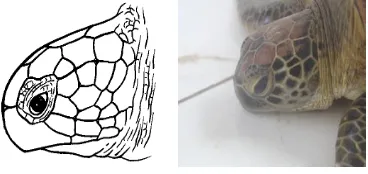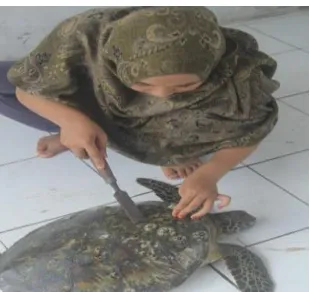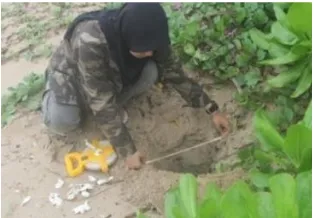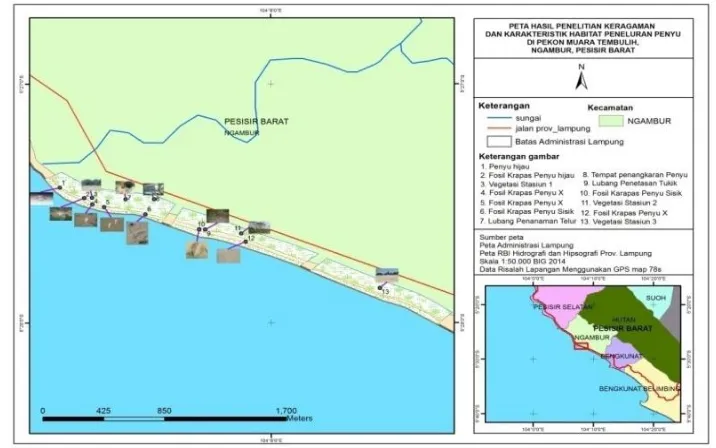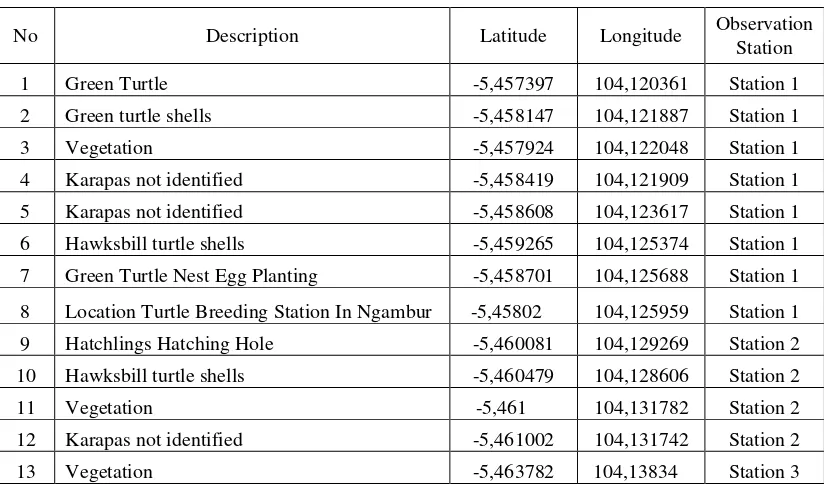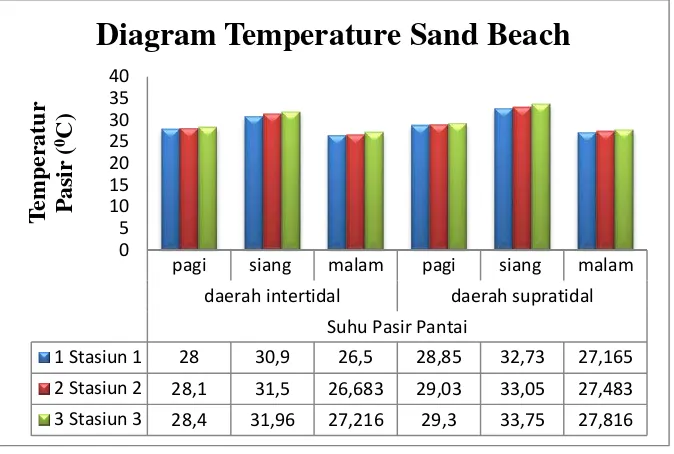ii
PROCEEDING IWS 2016
Person in charge:
Warsono, Ph.D.
Steering Committee:
Dr. Hartoyo, M.Si.
Organizing Commettee:
Dr. Erdi Suroso, M.T.A.
Editors:
Dr. Endang Nurcahyani, M.Si.
Dr. Ir. Sumaryo Gs, M.Si.
Published by:
Research and Development Center of Environment
Institute for Research and Community Service
University of Lampung
Jl. Sumantri Brojonegoro No. 1, Bandar Lampung 35145
Phone: +62-721-705173, Fax. +621-721-773798
E-mail: [email protected]
ISBN: 978-602-0860-13-8
All right reserved (including those of translation into other languages).
No part of this book may be reproduced in any form
–
by photoprinting,
LIST OF CONTENTS
Pages WELCOMING SPEECH FROM CHAIR PERSON OF THE ORGANIZING
COMMITTEE ...
iii
OPENING REMARKS FROM THE HEAD OF RESEARCH INSTITUTION AND COMMUNITY SERVICE, UNIVERSITY OF LAMPUNG ...
v
KEYNOTE SPEAKER: MINISTER OF ENVIRONMENT AND FORESTRY REPUBLIC OF INDONESIA ...
vi
SAFE SYSTEMS: HWC Safe Systems Approach and the HWC Rapid Assessment tool (Ashley Brooks, Ph.D.) ...
1. PREVENTION MODELS TOWARDS HUMAN - TIGER CONFLICT (HTC) IN
BUKIT BARISAN SELATAN NATIONAL PARK (BBSNP), LAMPUNG (Firdaus Rahman Affandi, Tugiyono, G. Nugroho Susanto, Elly Lestari Rustiaty) ...
1 -- 10
2. IMPACT OF ANIMAL HOUSING TOWARDS WORMS INFECTION IN
LOCAL BEEF CATTLE FARMS IN DUKUHBADAG VILLAGE,
CIBINGBING, KUNINGAN, WEST JAVA, INDONESIA: AN ANALYSIS (Retno Widyani, Fitri Dian Perwitasari, Mus Nilamcaya, Ida Herawati) ...
11 -- 17
3. ESTABLISHING BASELINE DATA ON FISHERMAN AND FISH CAUGHT
ON THE SERKAP RIVER, KAMPAR PENINSULA, RIAU (Sidiq Purwanto) ....
18--24
4. WALKING THROUGH CONVERSION: A MONITORING OF ELEPHANT
MOVEMENT IN DEGRADED FOREST OF TESSO NILO LANDSCAPE (Febri Anggriawan Widodo, Wishnu Sukmantoro, Heri Irawan, Eka Septayuda, Yansen Gultom, Samsuardi, Sunarto, Nurchalis Fadhli) ...
25--29
5. EVALUATING THE INTERVENTION METHODS TO REDUCE
HUMAN-ELEPHANT CONFLICT AROUND WAY KAMBAS NATIONAL PARK (Sugiyo, Ardiantiono, Agus Santo, William Marthy, Fahrul Amama) ...
30--36
6. JAVAN RHINO (RHINOCEROS SONDAICUS), BANTENG (BOS JAVANICUS) & OTHER MAMMALS COEXISTENCE IN UJUNG KULON NATIONAL PARK: SPATIAL AND TEMPORAL OVERLAP (Mahmud R, Rahmaningsih MD, Sunarto, Daryan, Firdaus AY, Muhtarom A, Setiawan R) ...
37--49
7. FILLING THE KNOWLEDGE GAP ON THE ENDANGERED ASIAN TAPIRS
IN SOUTHERN PART OF TROPICAL RAINFOREST HERITAGE OF
SUMATRA (Ardiantiono, Fahrudin Surahmat, Tri Sugiharti, Wulan Pusparini) ....
50--57
8. PEKON MUARA TEMBULIH, NGAMBUR, PESISIR BARAT:
PRELIMINARY STUDY ON THE CHARACTERISTICS OF TURTLE
HABITAT (Brina Wanda Pratiwi, Sugeng P. Harianto, Elly Lestari Rustiati) ...
58--65
9. SUMATRAN ELEPHANT (ELEPHAS MAXIMUS SUMATRANUST) FOOD
COMPOSITION AND ITS PREFERENCE IN TESSO NILO NATIONAL PARK (Defri Yoza and Yuliantony) ...
66--77
10. DIVERSITY AND ABUNDANCE OF AVIAN COMMUNITY AT COASTAL
LAGOONS IN BUKIT BARISAN SELATAN NATIONAL PARK, INDONESIA: WHY WATERBIRD IS LACKING? (Ani Mardiastuti, Yeni A. Mulyani, Lina K. Dewi) ...
58
International Wildlife Symposium 2016 Bandar Lampung, Indonesia
PEKON MUARA TEMBULIH, NGAMBUR, PESISIR BARAT:
PRELIMINARY STUDY ON THE CHARACTERISTICS OF
TURTLE HABITAT
Brina Wanda Pratiwi1, Sugeng P. Harianto1, Elly Lestari Rustiati2 1Department of Forestry, Faculty of Agriculture
2Department of Biology, Faculty of Mathematics and Natural Sciences, University of Lampung
Corresponding author : [email protected].
ABSTRACT
Regional marine conservation areas (KKLD) of the West Coast is an area of deployment and the nesting naturally. Ngambur the natural habitat of Olive Ridley turtles, green turtles, leatherback and hawksbill. Turtle habitat is located in the coastal area of vegetated and rescue area at the beach Ngambur, the turtle habitat environmental changes around the beach Ngambur thought to trigger the decline of turtle species. The purpose of this study is to determine the characteristics of the species diversity of turtles and turtle nesting habitat types in Muara Pekon Tembulih, Ngambur, West Coast. This research was conducted in February to May 2016 using a concentrated area and method of Rapid Assessment Procedures. Based on the research of sea turtle species found in Ngambur namely the green turtle (Chelonia mydas) (n = 3) and hawksbill (Eretmochelys imbricata) (n = 2) identification by outer shells were found. Characteristics of nesting habitat in Ngambur has a length of 941.23 meters beach, intertidal beach width ranging between 11.52 to 14.76 meters, the width of the beach supratidal ranged from 5.04 to 10.96 meters, temperature in the range of 26.5 to 33.750 C, the water content of 0.07%, the texture of the sand was 84.22% and 13.98% of fine sand texture, the flatness of the beach Ngambur including ramps category with an average of ± 2.43%. Vegetation is dominated nesting sites are the type of pandan sea (Pandanus tectorius) and animals that potentially predatory turtles and turtle eggs are paederinae (Paederus littoralis), ghost crabs (Ocypode ceratophthalma), eagle (haliaetus leucogaster), long-tailed macaque (Macaca fascicularis), snakes (Bungarus Candidus), dogs (Canis lupus familiaris) and lizard (Varanus salvator). The existence of turtles in Ngambur still be maintained, with good habitat conditions will help the survival of turtles in captivity turtle in Ngambur.
Keywords: Turtle nesting habitat characteristics, Ngambur, Turtle.
1. INTRODUCTION
Turtle is a species that lived on earth millions of years ago, and is able to perform the annual migration, in the thousands of kilometers between areas where to eat and a place to lay eggs. Turtle belongs to the class Reptilia were able to escape and live up to now.
Under the provisions of CITES (Convention on International Trade in Endangered Species of Wild Flora and Fauna), all kinds of sea turtles have been included in Appendix I, which means turtle international trade for commercial purposes is prohibited. World conservation body IUCN (International Union for Conservation of Nature and Natural Resources) insert hawksbill to the list of critical species (critically endangered). While the green turtle, olive ridley turtles and loggerhead sea turtles are classified into endangered species (endangered).
59
International Wildlife Symposium 2016 Bandar Lampung, Indonesia
2. MATERIAL AND METHODS
The research was conducted from February to May 2016 Pekon Muara Tembulih, District Ngambur, West Coastal District, Lampung Province. Data is collected using a concentrated area, turtles are found in place to identify species based on morphological characteristics. The discovery of turtles taken point using GPS coordinates, and then note the condition of the existing vegetation around the site turtle invention. While the observations using Rapid Assessment Procedures method involves taking a point using GPS coordinates when there is the lowest and highest tides, the flatness of the beach, while collecting data about coastal vegetation and wildlife potential as natural predators of turtles done by direct observation in the study site.
Analysis of the nesting habitat characteristics is based on vegetation data and parameter data discovery environment turtles. Environmental parameters were analyzed descriptively, covers the length and width of the beach, beach vegetation type, texture and temperature of the sand beach, size of the hole, turtle predators and human activity.
3. RESULT AND DISCUSSION
3.1.
Diversity Turtle
a. Turtle identification
Turtles were found on 22 April 2016 at 19:48 am at the observation station 1 is located at coordinates (x, y) (50 45 '73.97 "and a 1040 12' 03,61") is a type of green turtle (Chelonia mydas), this information tailored to the characteristics possessed. The characteristics possessed like the green turtle (Chelonia mydas), namely the shape of the plastron and a head that resembles a green turtle (Figure 1 and 2), forms a small head, beak blunt and this turtle can’t enter his head into the shell (Agus 2007 ).
Figure 1. The shape of the head of a green turtle that was found in the observation station 1 Ngambur nesting beaches, (Wyneken, 2001).
Figure 2. The shape of the plastron green turtles are found in the observation station 1 Ngambur nesting beaches, (Wyneken, 2001).
60
International Wildlife Symposium 2016 Bandar Lampung, Indonesia Table 1. The morphology of the green turtle (Chelonia mydas), which is found in the observation
station 1 turtle nesting beaches in Ngambur on 22 April 2016
Date and Time encounter
with wildlife Morphology Green Turtle Unit (cm)
22 April 2016
1. Curved carapace length 45,0
2. carapace width 41,5
3. Right upper limb length 25,0
4. Left upper limb length 25,0
5. The width of the right upper limb 12,5 6. The width of the left upper limb 12,5 7. The length of the lower leg right 12,0 8. The length of the left lower leg 12,0 9. The width of the right lower limb 7,0 10. The width of the left lower leg 7,0
11. Long neck - head 13,0
12. The width of the head 6,6
13. long tail 2,0
Total length 60 cm Weight 28,5 kg
Before the turtle in release into the sea, after cleaning carapace of parasites that attack barnacles and moss that grows on the body (Figure 3).
Figure 3. Cleaning parasites (Barnacle) and the moss on the carapace.
Parasite that grows in the form of turtle shells of shellfish called barnacles. Barnacle has a white color with soft parts in it, which over time can erode the carapace so hollow. This type of parasite attacking the turtle's body such as the head and flipper turtles. Cleansing parasites and moss should be done with caution due to the barnacles of life converge on the turtle's body and if done abruptly, it can hurt the body of the turtle.
3.2.
Physical Habitat Nesting
a. Length and Width Beach
Long beach turtle breeding Ngambur is 941.23 meters. Conditions beach long enough will facilitate in the selection of the mother turtle nesting sites. For the measurement of the width of the beach turtle breeding area is divided into two regions namely intertidal and sub supratidalnya (Table 2).
61
International Wildlife Symposium 2016 Bandar Lampung, Indonesia statement is consistent with the statement Hirth (1971), that a general state of green turtle nesting beaches is the beach with supratidal wide area.
Table 2. Measurement of the length and width of the beach nesting habitat Ngambur
No. Observation Station
Long Beach Wide Width Intertidal Beach
Wide Width Supratidal Beach
1. Station 1 313.743 meter 11.52 meter 7.42 meter
2. Station 2 313.743 meter 14.76 meter 10. 96 meter
3. Station 3 313.743 meter 12.68 meter 5.04 meter
Total 941.23 meter 27.28 ± 9.09 23.42 ± 7.80
b. The size of the nest and laying
There is a relic hatchlings nest has hatched and found the size of the surface of the nest diameter is 42 cm, base diameter is 60 cm nests and nest depth was 68 cm (Figure 4).
Figure 4. Measurement nest of turtle eggs.
According to Agus (2007), green sea turtles lay eggs for approximately 2 hours with the number of eggs in a nest ranged between 80-195 grains. Nests are generally diameter between 23-45 cm with a depth of about 55-70 cm. The size of the nest to save turtle eggs depends on the species nesting turtle, turtle the size and number of eggs released by each species.
c. Planting nest Turtle Eggs
Nest egg implantation is used to assist the process of hatching eggs, turtle eggs whose existence is threatened human theft or disturbed by predators can be exhumed and transferred to artificial nests safer. The size of the turtle nests plantings adapted to the type of turtle eggs, generally green turtle nests in diameter from 23 to 45 cm with a depth of 55 to 70 cm (Agus, 2007). Green turtle eggs that have been granted by the residents around the turtle breeding on 10 April 2016 amounted to 98 grains. Planting nest egg located at coordinates (x, y) (50 45 '87.01 "and a 1040 12' 56.88") in diameter nest observation station 1. measuring 30 cm by 57 cm depth (Figure 5).
62
International Wildlife Symposium 2016 Bandar Lampung, Indonesia
d. Vegetation Beaches
Found diverse coastal vegetation type, sea pandanus (Pandanus tectorius) is a plant that spreads overall on turtle nesting area in Ngambur. Type of beach vegetation at each observation station has a different composition (Table 3).
Table 3. The type of vegetation found on any observation station in Turtle Conservation Area in Ngambur
Observation Station
Vegetation Type
Scientific Name
Remarks
Observation Station
1
Tapak kuda Ipomea pescaprae Perdu
Pandan laut Pandanus tectorius Perdu
Ketapang Terminalia catappa Tree levels
Kelapa Cocos nucifera Tree levels
Observation Station
2
Jati pasir Guettarda speciosa Tree levels
Nyamplung Callophylum inophylum Tree levels
Tapak kuda Ipomea pescaprae Perdu
Pandan laut Pandanus tectorius Perdu
Ketapang Terminalia catappa Tree levels
Observation Station
3
Jati pasir Guettarda speciosa Tree levels
Nyamplung Callophylum inophylum Tree levels
Tapak kuda Ipomea pescaprae Perdu
Pandan laut Pandanus tectorius Perdu
Waru laut Hibiscus tiliaceus Tree levels
Ketapang Terminalia catappa Tree levels
e. Layout and Position Location Observation Station
63
International Wildlife Symposium 2016 Bandar Lampung, Indonesia Determination of coordinates at each point of observation stations use the GPS map 78s. The method used is the method of Rapid Assessment Procedures by tracing the beach and retrieve data in the form of point coordinates at the time of the encounter with turtles live and when they found signs of turtle like the discovery of shells, hawksbill turtle, trace and nest nesting, the tide sea in the intertidal and supratidal the coordinates vegetated areas and facilities in the turtle breeding locations (Figure 6).
Decision point coordinates using GPS map 78s, to produce information that could explain the location and position of the time found the turtle and the signs of its existence (Table 4).
Table 4. The location and the position is found turtles and signs of its presence in the nesting beaches Ngambur
No Description Latitude Longitude Observation
Station
1 Green Turtle -5,457397 104,120361 Station 1
2 Green turtle shells -5,458147 104,121887 Station 1
3 Vegetation -5,457924 104,122048 Station 1
4 Karapas not identified -5,458419 104,121909 Station 1
5 Karapas not identified -5,458608 104,123617 Station 1
6 Hawksbill turtle shells -5,459265 104,125374 Station 1
7 Green Turtle Nest Egg Planting -5,458701 104,125688 Station 1
8 Location Turtle Breeding Station In Ngambur -5,45802 104,125959 Station 1
9 Hatchlings Hatching Hole -5,460081 104,129269 Station 2
10 Hawksbill turtle shells -5,460479 104,128606 Station 2
11 Vegetation -5,461 104,131782 Station 2
12 Karapas not identified -5,461002 104,131742 Station 2
13 Vegetation -5,463782 104,13834 Station 3
f. The Flatness Of The Beach
The flatness of the beach is measured by the distance between vegetation representing inland boundary to the shoreline as the ocean boundary. Measurement of the flatness of the beach in Ngambur done by measuring the height and distance of the beach flat (Table 5).
Table 5. Measurement of the flatness of the beach at three observation stations in Ngambur
64
International Wildlife Symposium 2016 Bandar Lampung, Indonesia The slope of the beach in Ngambur between 0.570 to 2.460. the slope of the highest in the observation station 2, namely in the area of intertidal 2,460 and the lowest was in the area supratidal 0.570. Nesting sites in the turtle breeding area Ngambur relatively flat and wide, and the area is quite spacious supratidalnya. According Nuitja (1992), in general, to the nesting area covers only ranges from 2-12 meters above the highest tide. While the flatness of the beach is relatively flat and flat, is a habitat for green turtles and hawksbill (Priyono, 2004).
g. Temperature and Texture Sand Beach
Sand temperature measurement performed on intertidal areas and regions supratidal use a thermometer. Measurements done 3 times a day at (06:00, 12:00 and 21:00) in the intertidal area and supratidal that exist at each observation station. Temperature fluctuations in the beach sand is presented (Figure 7).
Figure 7. Fluctuations in temperature sand beach at 3 observation stations.
Increasing the maximum temperature occurs during the daytime ie 33.75 0C at station 3, the high temperature caused by the heat produced by the sun at 12:00 to 13:00 pm and a lack of vegetation cover in the vicinity of the station 3. The temperature at the surface of the sand is too high , can cause the level of turtle encounters at that location the less.
Testing of the texture and moisture content in the sand beach at Ngambur done using oven systems and methods of sieving (sieve) using the tools storey sand filter. Tests conducted at the Laboratory of Analysis Polinela, the water content is generated by the testing was 0.07%, the water content in the sand has a function which is to maintain the temperature in the sand, so that the temperature of the sand is relatively stable.
Texture sand nesting beaches in Ngambur dominated by sand texture moderate (mm 0:19 - 0:45 mm) amounted to 84.22% and the texture of fine sand (mm 0:09 - 0:19 mm) amounted to 13.98% (Table 6). Green and hawksbill turtles lay their eggs in the sand predominantly fine to medium sand. Nuitja (1992), states that the composition of the sand texture of sand to the nesting area of not less than 90% with a diameter between 0.18 to 0.21 mm and the remaining dust or clay with a grain diameter of fine form and medium.
h. Type - Type Other Animals
Animals that potentially predatory turtles and turtle eggs in the turtle breeding area in Ngambur there are 7 species (Table 7).
pagi siang malam pagi siang malam
daerah intertidal daerah supratidal
Suhu Pasir Pantai
1 Stasiun 1 28 30,9 26,5 28,85 32,73 27,165
2 Stasiun 2 28,1 31,5 26,683 29,03 33,05 27,483
3 Stasiun 3 28,4 31,96 27,216 29,3 33,75 27,816
65
International Wildlife Symposium 2016 Bandar Lampung, Indonesia Table 7. Type - Type Animals As Predator turtles and eggs
No. Animal type Latin Name Description
1. Ant Semai Paederus littoralis Predators
2. Ghost Crab Ocypode ceratophthalma Predators
3. Eagles Haliaetus leucogaster Predators
4. Long-tailed monkeys Macaca fascicularis Predators
5. Snake Bungarus candidus Predators
6. Dog Canis lupus familiaris Predators
7. Lizard Varanus salvator Predators
4.
CONCLUSION
Based on the research results can be summarized as follows.
1. Type of turtle found in the turtle breeding Ngambur is the green turtle (Chelonia mydas) (n=4) and hawksbill (Eretmochelys imbricata) (n=2).
2. Characteristics of nesting site for turtles in captivity turtle Ngambur has a length of 941.23 meters with a width shore intertidal beach 11.52 m - 14.76 m while the width of the beach supratidal 5.04 m - 10.96 m, sand temperatures in the range 26 5-33,750C, the water content of 0.07%, the texture of the sand was 84.22% and 13.98% of fine sand texture, the flatness of the beach Ngambur including ramps category with an average of ± 2.43%. Vegetation is dominated nesting sites are the type of pandan sea (Pandanus tectorius) and animals that potentially predatory turtles and turtle eggs are paederinae (Paederus littoralis), ghost crabs (Ocypode ceratophthalma), eagle (haliaetus leucogaster), long-tailed macaque (Macaca fascicularis), snakes (Bungarus Candidus), dogs (Canis lupus familiaris) and lizard (Varanus salvator).
ACKNOWLEDGMENT
Further thanks to Mr. Ir. Ismadi Raharjo, M.Si. and Muhammad David, A.Md. (Analyst of Analysis Laboratory Polinela). Miss. Ayu Barry and Sdra. Rudi Santoso and Yusmanto Malik Ibrahim who have helped make observations.
REFERENCES
Agus. 2007. Penangkaran Penyu. Angkasa. Bandung.
Hirth, H.F. 1971. Synopsis of Biological Data on the Green Turtle. FAO Fisheris synopsis. No. 85. Rome Research. Jhon Willey and sons Inc. USA.
Nuitja. I.N.S. 1992. Biologi Dan Ekologi Pelestarian Penyu Laut. IPB Press. Bogor.
Priyono, A. 2004. Pengelolaan Habitat Dan Satwa Penyu Laut. Media Konservasi Volume II.
